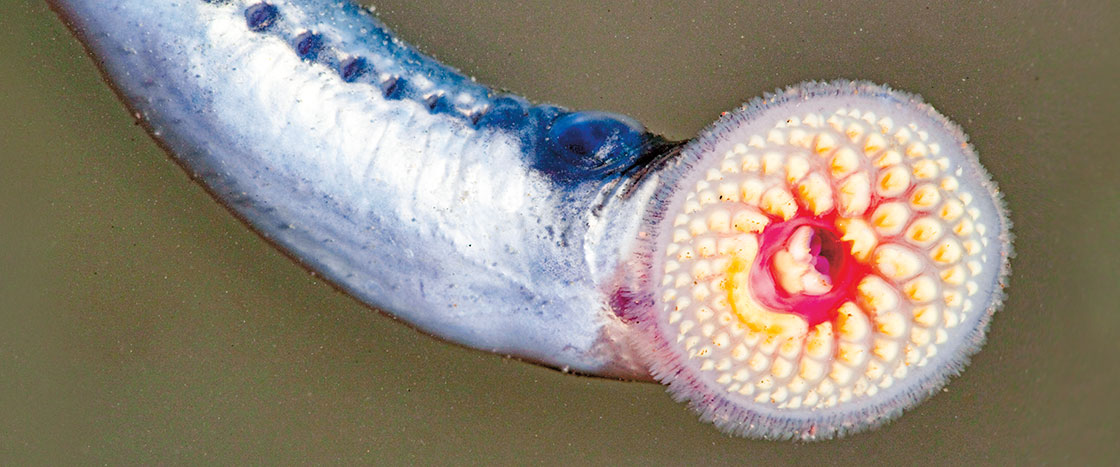Beatrice Mertz
Courtesy of Beatrice Skaggs
Eleven-year-old Beatrice Mertz held a slimy, slithering creature in her hand. It was as long as her forearm, and it had a round mouth lined with more than 100 razor-sharp teeth. It looked like an eel or a snake. But it was actually a fish—and it was her job to kill it.
With one quick motion, Beatrice cut the creature’s head off with a sharp knife. She breathed a sigh of relief.
The year was 1941. Beatrice had been working summers on her mom’s fishing boat on Lake Huron in Michigan. It is one of the largest lakes in the world and one of the five Great Lakes between Canada and the United States. Beatrice’s job was to get rid of the sea lampreys, a species of fish not naturally found in the Great Lakes. Like a vampire in a horror film, lampreys attach themselves to other fish, drill a hole into their flesh, and suck their blood. The creatures were killing the fish Beatrice’s mom was trying to catch.
“When a fish came into the boat and there was a lamprey on it, my mom would always say, ‘Beatsie, you take care of that lamprey!’ ” Beatrice remembers. “She would never allow a live lamprey to go back into the water.”
At the time, sea lampreys were spreading across all of the Great Lakes. Soon, these monstrous creatures would have a devastating impact on the environment.
Could anything be done to stop them?
Eleven-year-old Beatrice Mertz held a wet, wiggling creature in her hand. It stretched from her fingers to her elbow. It had a round mouth with more than 100 super-sharp teeth. It looked like a snake. But it was really a fish. And it was her job to kill it.
Quickly, Beatrice cut the creature’s head off with a sharp knife. What a relief, she thought.
The year was 1941. Beatrice had been working summers on her mom’s fishing boat. They fished on Lake Huron in the state of Michigan. Lake Huron is one of the largest lakes in the world. It’s one of the five Great Lakes between Canada and the United States.
Beatrice’s job was to get rid of the sea lampreys. That’s a species of fish not naturally found in the Great Lakes. Like a vampire in a horror film, lampreys attach themselves to other fish. They drill a hole into the fish’s flesh. They suck their blood. The creatures were killing the fish Beatrice’s mom was trying to catch.
At the time, sea lampreys were spreading across all of the Great Lakes. Soon, these awful creatures would have a terrible effect on nature.
Could anything stop them?

